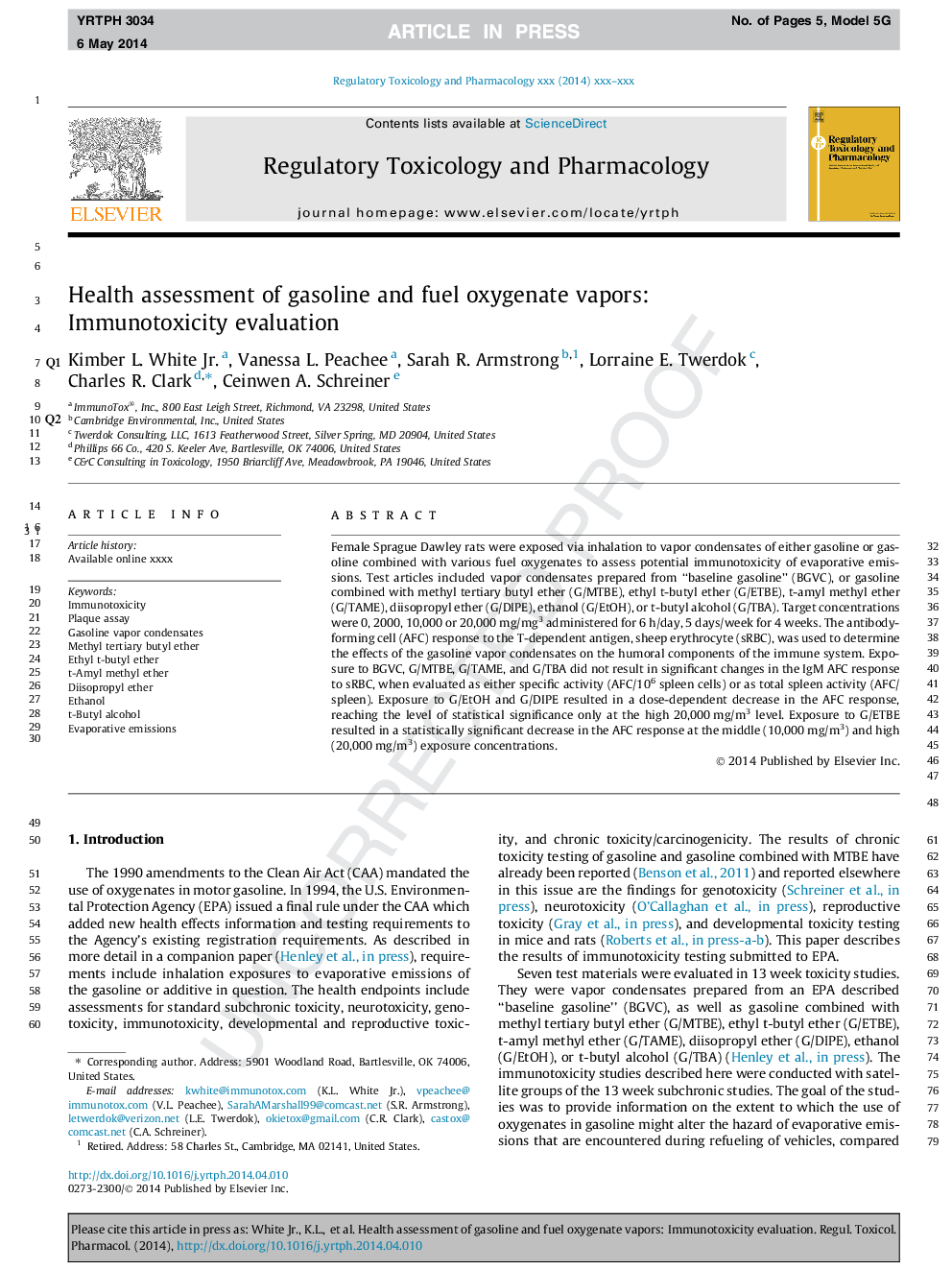| Article ID | Journal | Published Year | Pages | File Type |
|---|---|---|---|---|
| 5856989 | Regulatory Toxicology and Pharmacology | 2014 | 5 Pages |
Abstract
Female Sprague Dawley rats were exposed via inhalation to vapor condensates of either gasoline or gasoline combined with various fuel oxygenates to assess potential immunotoxicity of evaporative emissions. Test articles included vapor condensates prepared from “baseline gasoline” (BGVC), or gasoline combined with methyl tertiary butyl ether (G/MTBE), ethyl t-butyl ether (G/ETBE), t-amyl methyl ether (G/TAME), diisopropyl ether (G/DIPE), ethanol (G/EtOH), or t-butyl alcohol (G/TBA). Target concentrations were 0, 2000, 10,000 or 20,000Â mg/mg3 administered for 6Â h/day, 5Â days/week for 4Â weeks. The antibody-forming cell (AFC) response to the T-dependent antigen, sheep erythrocyte (sRBC), was used to determine the effects of the gasoline vapor condensates on the humoral components of the immune system. Exposure to BGVC, G/MTBE, G/TAME, and G/TBA did not result in significant changes in the IgM AFC response to sRBC, when evaluated as either specific activity (AFC/106 spleen cells) or as total spleen activity (AFC/spleen). Exposure to G/EtOH and G/DIPE resulted in a dose-dependent decrease in the AFC response, reaching the level of statistical significance only at the high 20,000Â mg/m3 level. Exposure to G/ETBE resulted in a statistically significant decrease in the AFC response at the middle (10,000Â mg/m3) and high (20,000Â mg/m3) exposure concentrations.
Keywords
Related Topics
Life Sciences
Environmental Science
Health, Toxicology and Mutagenesis
Authors
Kimber L. Jr., Vanessa L. Peachee, Sarah R. Armstrong, Lorraine E. Twerdok, Charles R. Clark, Ceinwen A. Schreiner,
